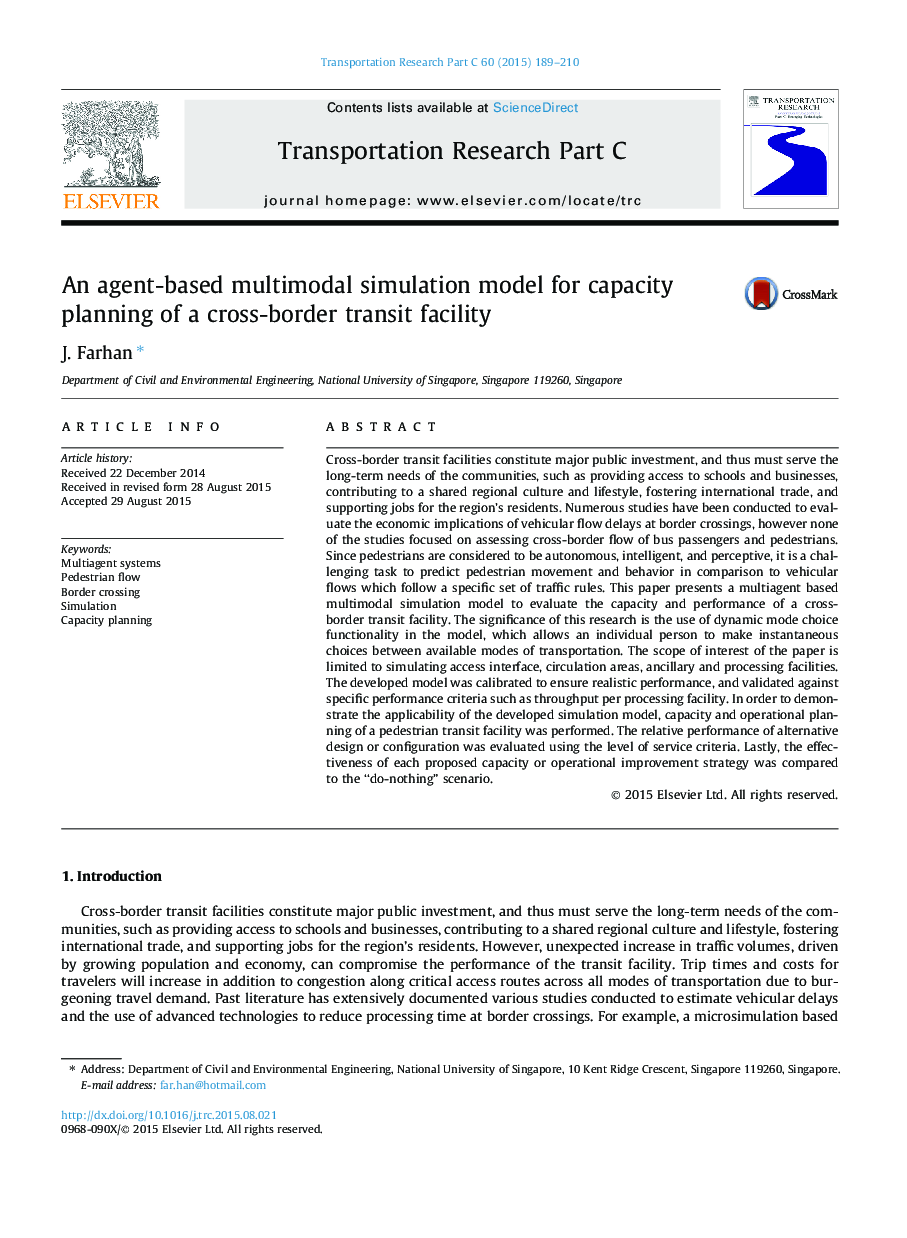| Article ID | Journal | Published Year | Pages | File Type |
|---|---|---|---|---|
| 6936588 | Transportation Research Part C: Emerging Technologies | 2015 | 22 Pages |
Abstract
Cross-border transit facilities constitute major public investment, and thus must serve the long-term needs of the communities, such as providing access to schools and businesses, contributing to a shared regional culture and lifestyle, fostering international trade, and supporting jobs for the region's residents. Numerous studies have been conducted to evaluate the economic implications of vehicular flow delays at border crossings, however none of the studies focused on assessing cross-border flow of bus passengers and pedestrians. Since pedestrians are considered to be autonomous, intelligent, and perceptive, it is a challenging task to predict pedestrian movement and behavior in comparison to vehicular flows which follow a specific set of traffic rules. This paper presents a multiagent based multimodal simulation model to evaluate the capacity and performance of a cross-border transit facility. The significance of this research is the use of dynamic mode choice functionality in the model, which allows an individual person to make instantaneous choices between available modes of transportation. The scope of interest of the paper is limited to simulating access interface, circulation areas, ancillary and processing facilities. The developed model was calibrated to ensure realistic performance, and validated against specific performance criteria such as throughput per processing facility. In order to demonstrate the applicability of the developed simulation model, capacity and operational planning of a pedestrian transit facility was performed. The relative performance of alternative design or configuration was evaluated using the level of service criteria. Lastly, the effectiveness of each proposed capacity or operational improvement strategy was compared to the “do-nothing” scenario.
Related Topics
Physical Sciences and Engineering
Computer Science
Computer Science Applications
Authors
J. Farhan,
